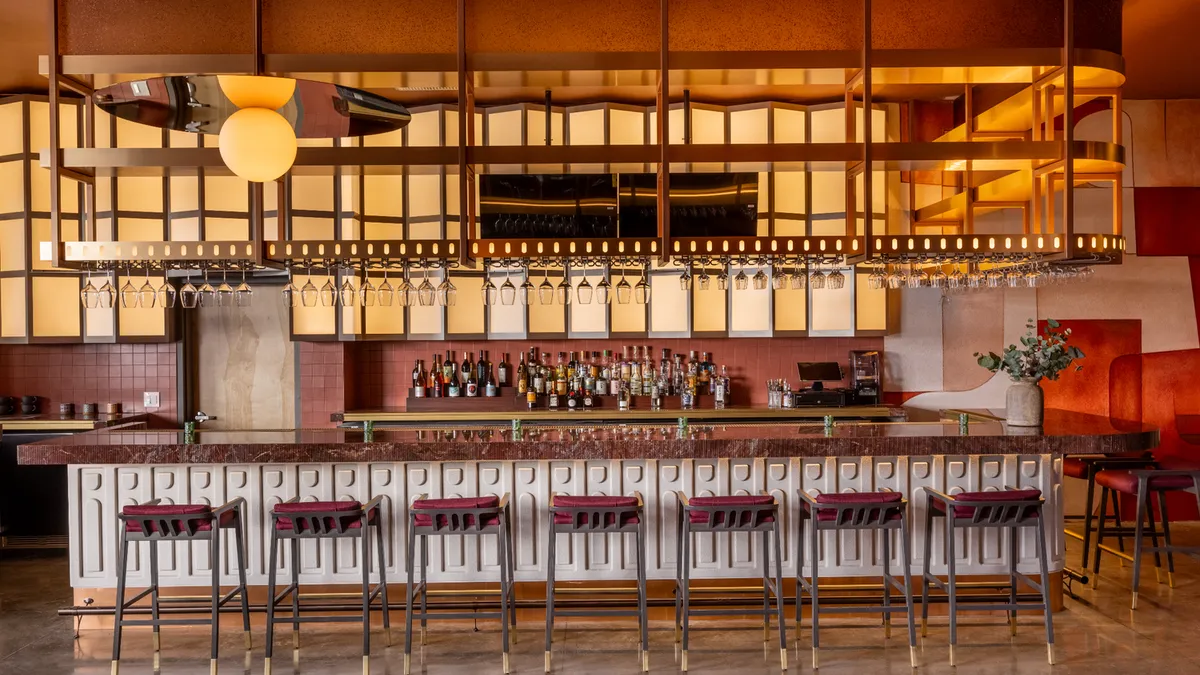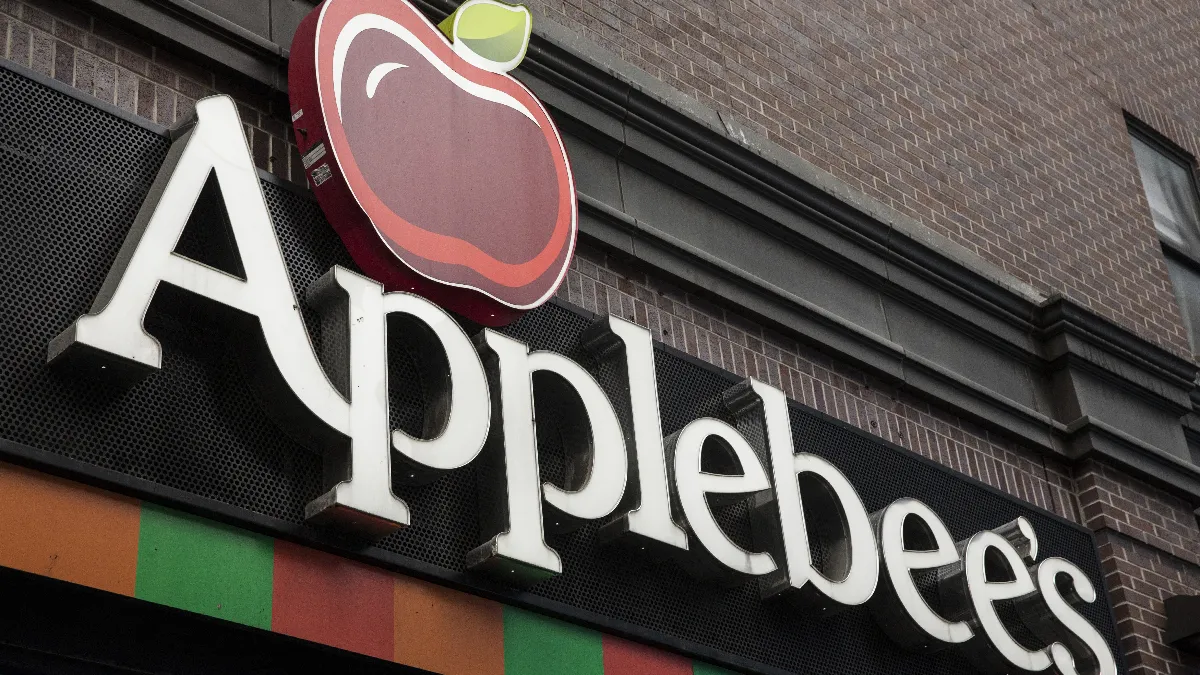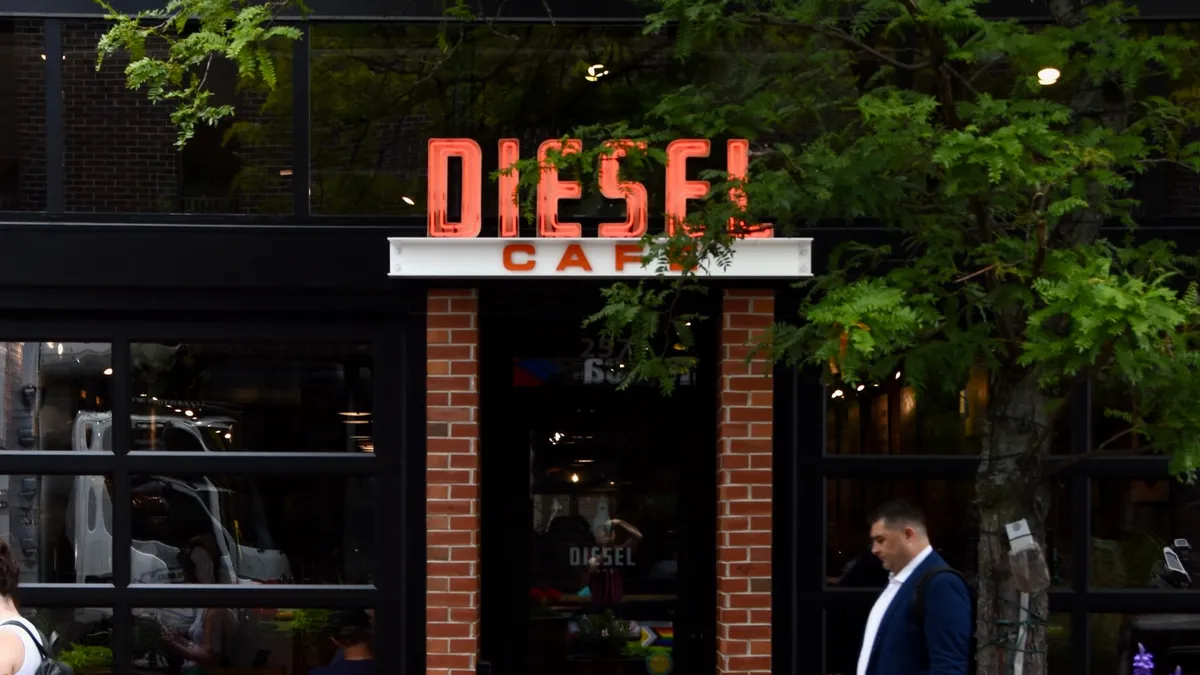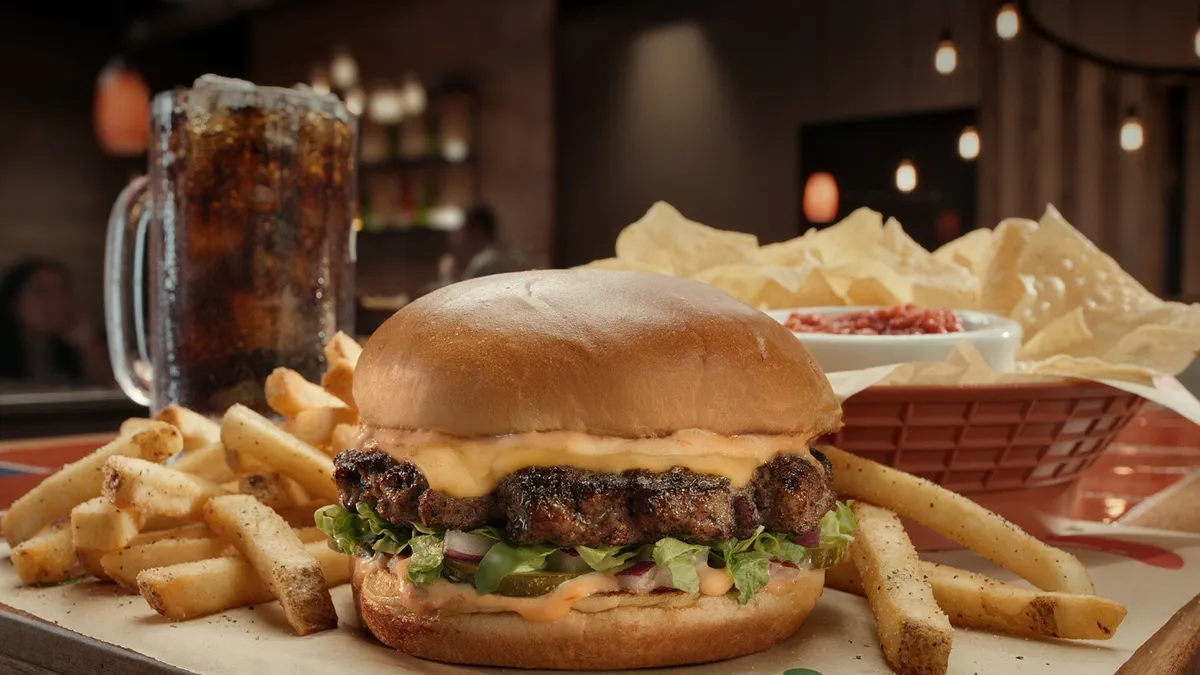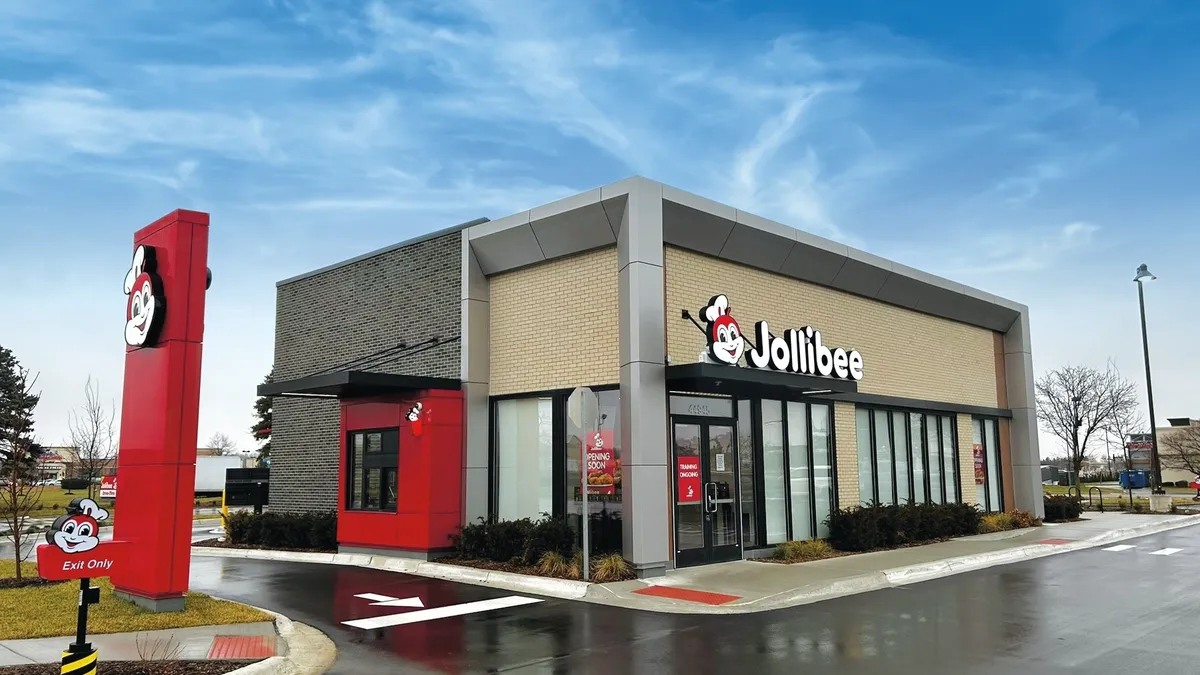The outlook for the restaurant industry in 2024 is clouded by many of the pressures that defined 2023. Inflation, diner price sensitivity, sluggish traffic and scarce capital will continue to plague operators, experts said.
“Right now is the hardest it has ever been in the 25-plus [past] years of running restaurants,” Bryan Solar, chief product officer at SpotOn, said.
These challenges may push restaurants to embrace new solutions this year, experts said.
Service fees can help full-service restaurants manage labor costs and offer employees competitive pay and benefits that lead to retention — but it’s crucial not to alienate cost-conscious customers, experts said. Restaurants of all kinds may deploy artificial intelligence and other labor-saving tech to manage costs, though experts predict more use cases for automating tasks like supply restocks than burger-flipping robots.
Chains are also trimming build-out costs for franchisees to encourage expansion despite high interest rates and construction costs.
Menu experimentation will continue to center around value offerings at major chains. But some restaurants will grow their snack and premium items as well as their customizable beverage offerings in a bid to grow mid-afternoon traffic and capture younger diners. Customization will continue to sweep through restaurant loyalty programs too, as operators shift some of their spending from marketwide offers to more targeted perks.
Take a closer look at the seven trends experts predict will define the restaurant industry in 2024.
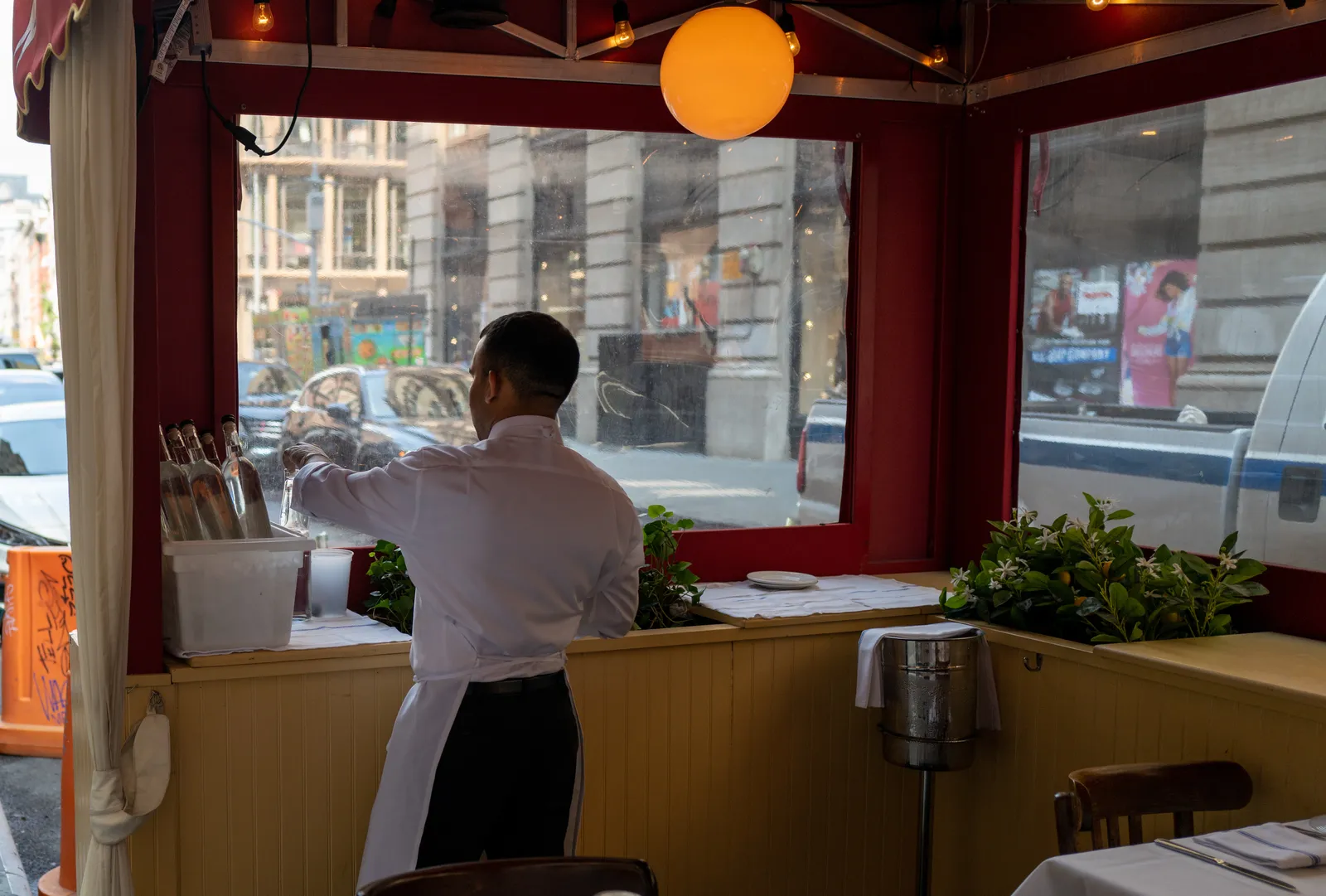
More full-service chains will embrace service fees
Service fees will likely proliferate across the country, especially in municipalities like Washington, D.C., that have ended the tip credit in favor of minimum wage for hourly restaurant workers, said Bin Lu, executive chef of Blue Rock in Virginia. Chicago will phase out tipped minimum wage over the next five years, while states like Alaska, California, Minnesota, Montana, Nevada, Oregon and Washington don’t have a tip credit.
“At some point down the road that service charge is going to be everywhere,” Lu said. Even Virginia, which still has a tip credit, has seen full-service restaurants add service charges.
District restaurants have applied service fees between 4% and 23%, said Omar Popal, founder and partner at Popal Group. Many operators designate these fees as a way to cover employee healthcare, or to help pay workers a living wage. Popal’s full-service restaurants Lapis and Lutèce apply a 20% and 22% service fee, respectively, and explain on their menus that the charges are to help pay for base wages, health insurance and employee benefits.
“There’s definitely an adjustment period for both the staff and the guests, but then eventually it [service charges] becomes more accepted on both sides,” Lu said.
Service fees, combined with set hourly wages, help create more stability for employees, insulating them from slow shifts that don’t yield a lot of cash, Lu said. But this model layers on extra costs and complexity for restaurateurs.
“When you have a tip credit, it’s less risky for the operator. If they overstaffed servers, you could call off someone, versus when everyone’s just dependent on the hourly rate, then you have to be really careful to make sure everyone is getting the correct number of hours they need to take home a reasonable paycheck,” Lu said.
Service charges can incur risk too, however, as these line items can frustrate price-sensitive diners. The Federal Trade Commission said in October that it intends to regulate restaurant service fees, and a California law that takes effect in July will ban “junk fees,” though it’s unclear if this will impact eateries.
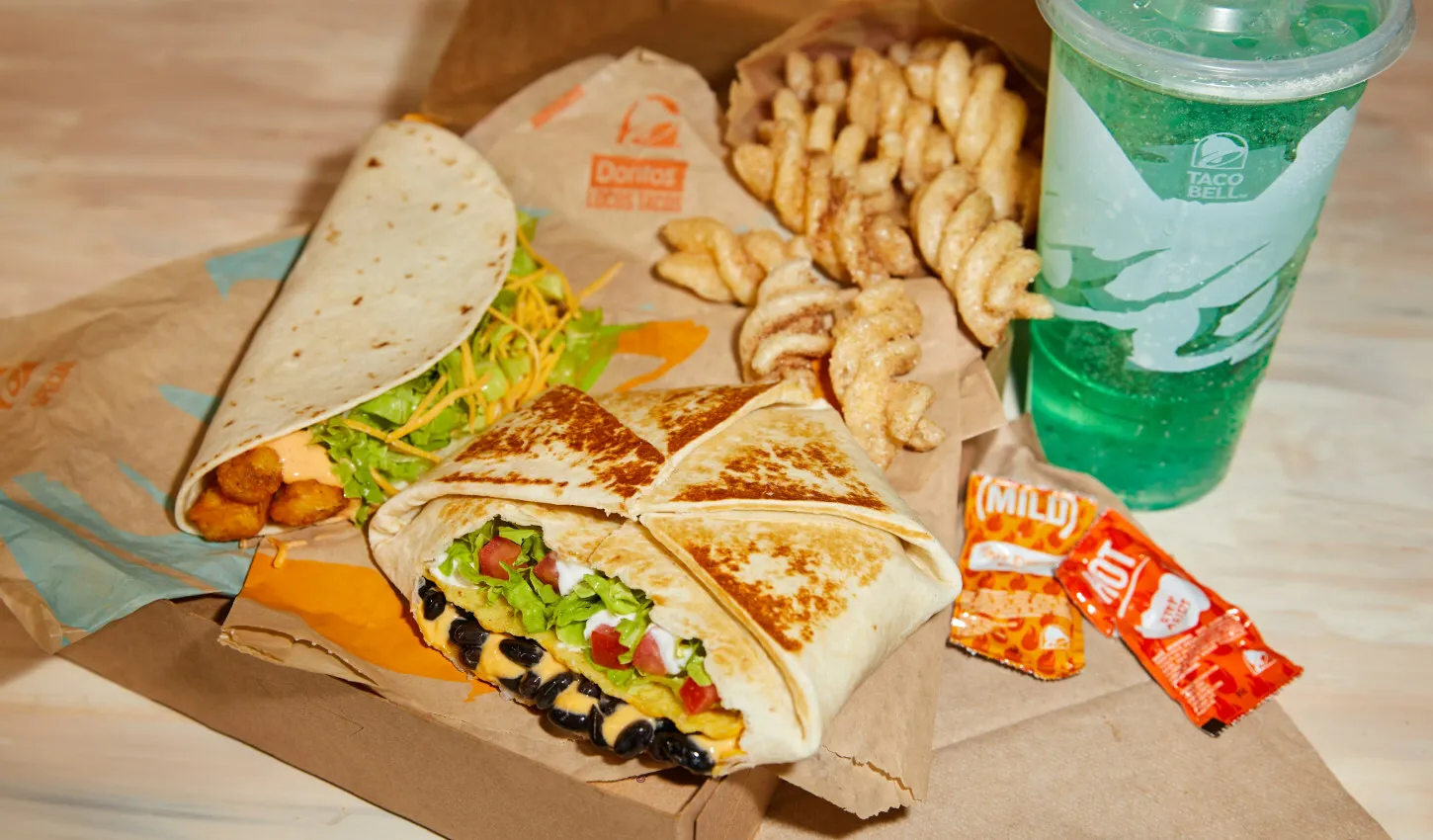
Chains will focus on value, take smaller price hikes
Restaurant prices hikes are expected to soften in 2024 compared to the low double-digit increases of 2023, which have pushed diners to their limit, experts said.
Lynne Collier, restaurant analyst at Water Tower Research, expects pricing to range between 3% and 5% this year given that commodity and labor costs have dropped. Fewer operators plan to increase pricing in 2024 — 61% of respondents to a Restaurant365 survey said they would raise prices in 2024, compared to 82% who said they planned to do so in 2023. Restaurant365 surveyed 5,500 operators across all restaurant segments.
While consumers have taken pricing well, especially at chains like Chipotle, further increases could start pinching consumers, experts agreed.
“We’ve kind of hit the top end of consumers’ willingness to pay,” said Bryan Solar, chief product officer at SpotOn. “2024 is going to be a real year of optimizations. Restaurants are going to have to figure out ways to run more effective businesses.”
To optimize efficiency and overall experience, restaurants could temporarily scale down their menus or use technology to change the composition of recipes, Solar said.
Church’s Chicken CEO Joe Guith said there is a lot of price sensitivity among consumers right now, and brands are “continuing to research and get the pulse of the consumer and what really resonates.”
“It’s taking your existing menu configuration and engineering for value and then innovating for value, as well,” he said.
Mark Wasilefsky, head of Franchise Finance at TD Bank, said the industry hasn’t quite reached the limits of pricing tolerance, but it’s getting close.
“There will be a point where consumers say, ‘I'm just going to make a sandwich, I'm just going to make my food at home.’” he said. That potential end of pricing power could make it harder for restaurants to absorb the cost of developing new menu items to keep pace with diner trends.
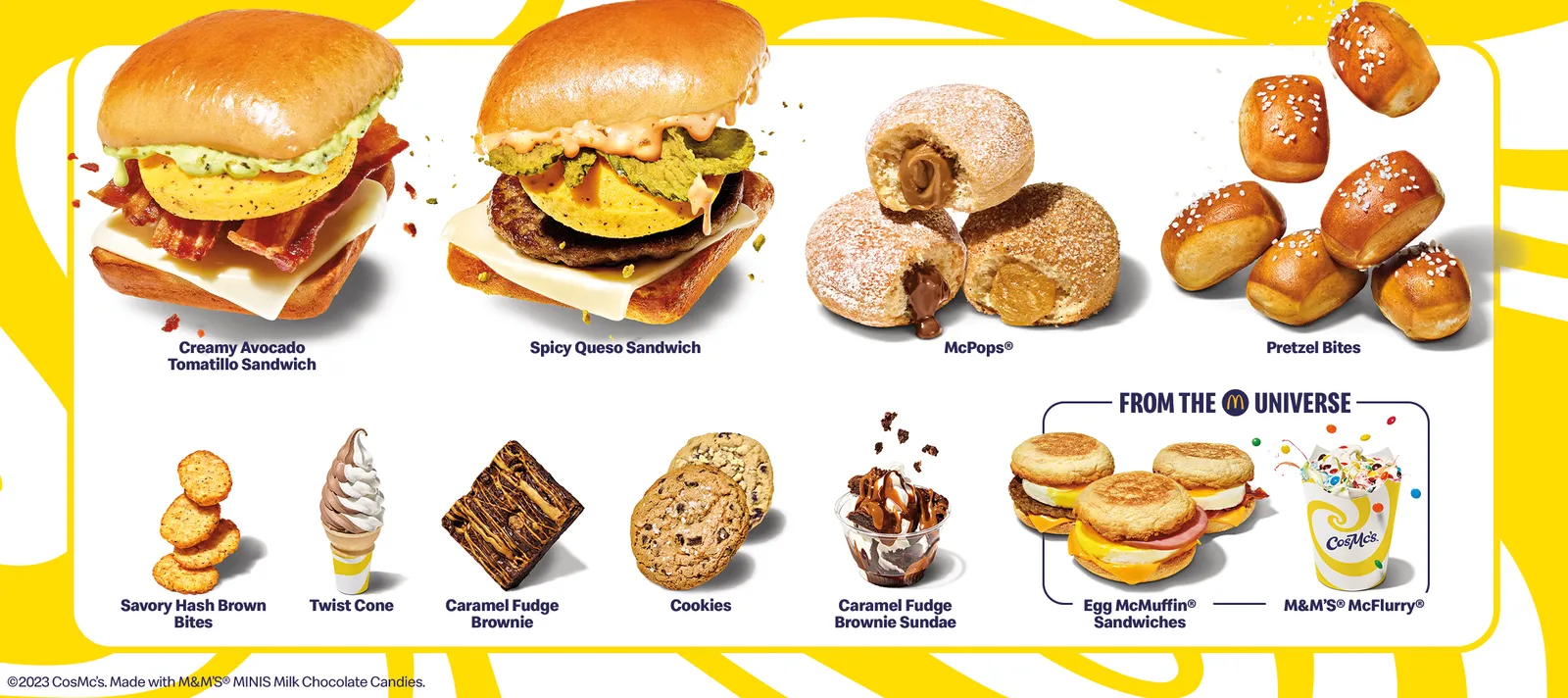
Restaurants will streamline menus, but grow snacks and beverages
Chains will continue to reduce operational complexity in their kitchens to manage menu costs.
Church’s Chicken, for example, has transitioned from multiple breading systems to just one — a departure from its practice over the past five years of introducing products that require new equipment and procedures, Guith said.
Marketing considerations are likely to drive menu innovation, Ab Igram, executive director of the Tariq Farid Franchise Institute at Babson College, said. Younger consumers responded well to McDonald’s celebrity-branded LTO meals, for example.
Shawn Halterman, VP of insights and channel strategy at Westrock Coffee, said caffeinated beverages that aren’t coffee or soda are moving into foodservice.
“In foodservice, it takes on an even more particular kind of crafted, healthy, customisable lens. It's not just a straightforward energy, but maybe it's energy plus focus or energy plus hydration.”
Kyle Newkirk, EVP of global sales and product innovation for Westrock, said the customer desire for beverages as the centerpiece of a dining occasion extends to smoothies, which he said are evolving from a fruit-forward product to one that has more energy elements, like caffeine, and satiating ingredients, like high protein content.
McDonald’s new CosMc’s concept is anchored by customizable and caffeinated lemonades and blended drinks that can include Vitamin C and pre-workout shots, for example. The concept targets snacking occasions between lunch and dinner, and Halterman said menu innovation will be particularly fast in the snacking category as restaurants try to stay on top of trends and drive younger consumers to buy during slower dayparts.
“We're seeing a lot more incidents of beverage as a destination driver rather than a meal accompaniment,” Halterman said. “The snack occasion might not have any food at all.”

AI adoption will grow, especially in the back of house
Restaurants rushed to incorporate artificial intelligence to their tech stacks in 2023 to smooth kitchen operations and improve service times by alerting operators, delivery drivers and kitchen staff when to prepare orders. Experts expect this innovation to continue this year as chains fine-tune their operations for speedy fulfillment of omnichannel orders.
“I think the most interesting applications of AI are going to be invisible to the customer,” Solar said.
This includes kitchen display systems that can help measure and manage kitchen throughput.
Wasilefsky said that AI investments are more likely to be for back-office processes and in data collection rather than actual food production, though chains like Red Robin and McDonald’s are looking for efficiencies in cooking.
Noah Glass, the CEO of Olo, sees kitchen operations as the most important site for AI investment.
“One of the things that we've been fascinated with over the past year is really understanding the demands on the kitchen at a moment in time,” Glass said.
Igram foresees the drive-thru as a space where AI investment will be especially prominent. AI powered menu boards that can upsell customers or change offerings based on the customer’s identity and purchasing history, will likely see more experimentation in 2024 as chains look to reduce labor costs.
“If you extend two of the biggest developments in technology right now, which are kiosk ordering and AI at the drive thru, you're probably losing two to three employees,” Wasilefsky said.
Artificial intelligence can help collect more detailed information about diner behavior, as well.
Cynthis Sener, president Go To Market of AI-powered reputation management firm Chatmeter, said the biggest opportunity for restaurants with the technology is finding ways to mine a “treasure trove” of consumer information that operators may not be able to translate otherwise.
“How do you use that data to actually grow your business and improve? … That’s the opportunity, and AI allows people to do their jobs more easily with insights so they can actually win against their competition,” Sener said.

Chains will lean on tech to cover rote tasks, deepen retention
The restaurant labor market has slowly begun to improve, but operators will seek opportunities to displace rote tasks — such as placing orders — to guests so staff can focus on “high hospitality moments” and improve efficiency, Glass said.
“It's not about removing labor from the restaurant. It's more about increasing labor productivity and increasing hospitality for the guest,” Glass said. “Tech like kiosks and QR codes make it possible for workers to spend more time talking with guests about their preferences and past experiences, as well as maintaining the appearance of the front of house.
Handheld devices are also becoming more popular across full-service restaurants as a way to improve service and quickly turn more tables, which can yield more opportunities for tips as well as additional sales, Solar said. These benefits can ease pressure to raise prices, as well.
Handhelds are becoming critical in full-service restaurants like Popal Group, which is being impacted by Washington, D.C.’s shift away from the tip credit. The company had to restructure its staff and how they are compensated. They also needed to bring in more technology to help maintain costs so they wouldn’t have to pass as much on to the consumer, Popal said.
QSRs are using more kiosks as labor-saving technology to drive upsell occasions and trim labor costs, Solar said.
“We brought a kiosk into one of our business [clients], and within a week, about 35% to 40% of all the transactions at the business were done through the kiosks,” Solar said.
Shannon Chirone, SVP of marketing at HungerRush, said that getting back-of-house technology right will also be a priority for restaurants.
“Everything there is about shaving off time or waste,” Chirone said. Of particular importance are the systems that take orders from the POS and online systems and organize them for back-of-house workers.
“Making sure that [orders are] displayed to the kitchen staff in the way that makes sense for them to prepare it; that’s taking seconds off of the preparation at every touchpoint, which ends up being minutes and hours to the restaurant,” Chirone said.
Tech will also become an increasingly common part of restaurants’ retention equation as they work to keep high-value talent without racking up costs, said Sarah Lockyer, chief brand officer at The Elliott Group.
Finding the right tech equation that “free[s] up time, space and money to continue to hire and take care of and retain and grow your best employees” is the problem every restaurant is trying to crack, she said.
Automating or digitizing common industry tasks — such as employee training, restocking and supply chain management — or introducing new efficiencies like same-day pay, can significantly improve the employee experience, she said.
“There’s so many non-sexy things around technology that can really help move the needle,” she said. “A hamburger-flipping robot gets a lot of headlines, but at the end of the day, what’s really going to drive an improved, efficient cost structure for restaurants is technology use throughout the organization, across every aspect of the employee and guest experience.”

Personalization becomes synonymous with loyalty
Loyalty programs, and overhauls to existing rewards platforms, proliferated in 2023 as restaurants aimed to deepen engagement with high-spend consumers. Experts expect chains to improve their customer data processing to offer more meaningful personalization to their loyalty schemes.
“We're living in a moment where there's so much data about every guest, but it's not collated in a helpful way,” Glass said. “So many of the transactions that happen are anonymous, nameless, faceless transactions. And actually, each one of them is a clue into that guest.”
Personalization, when coupled with mobile ordering, Chirone said, raises consumer expectations.
“Starbucks has been on the cutting edge of this,” Chirone said. “Their app has completely revolutionized [their ordering process]. You don't wait in line. It takes you two seconds to order, two seconds to pick it up and you’re out the door. You kind of get frustrated at another coffee shop that doesn't have that streamlined tech solution.”
Solar anticipates that this year, more full-service chains will begin to adopt personalized loyalty offers, such as offering customers new access to reservations once they hit a specific spend threshold, he said.
Personalization can also ease the tension between consumer desire for hospitality and the implementation of technology that speeds up the restaurant experience.
“In terms of the technology, you can make it more personalized to the consumer: Remembering their last order, greeting them by name. Those sorts of things can address the consumer on an individual personal level, no matter if it's [done by] a machine or a person,” Chirone said.
But the value of personalization through technology, rather than a connection with a human being, is most important for QSRs, Chirone said, as consumers are interested primarily in getting the right food and getting it fast. She pointed to Shake Shack’s in-store kiosks as a particularly successful example of a brand that blends hospitality with personalized technological solutions.
“It comes down to what the consumer expects,” Chirone said. Those brands which are able to meet customers where they are, rather than trying to engineer customer behavior, are more likely to be successful.
“It's a really big lift to change your customers’ behavior. They're telling you what's easiest and what they want, you know, make sure your technology solutions, including loyalty, is going where the heat is,” Chirone said.
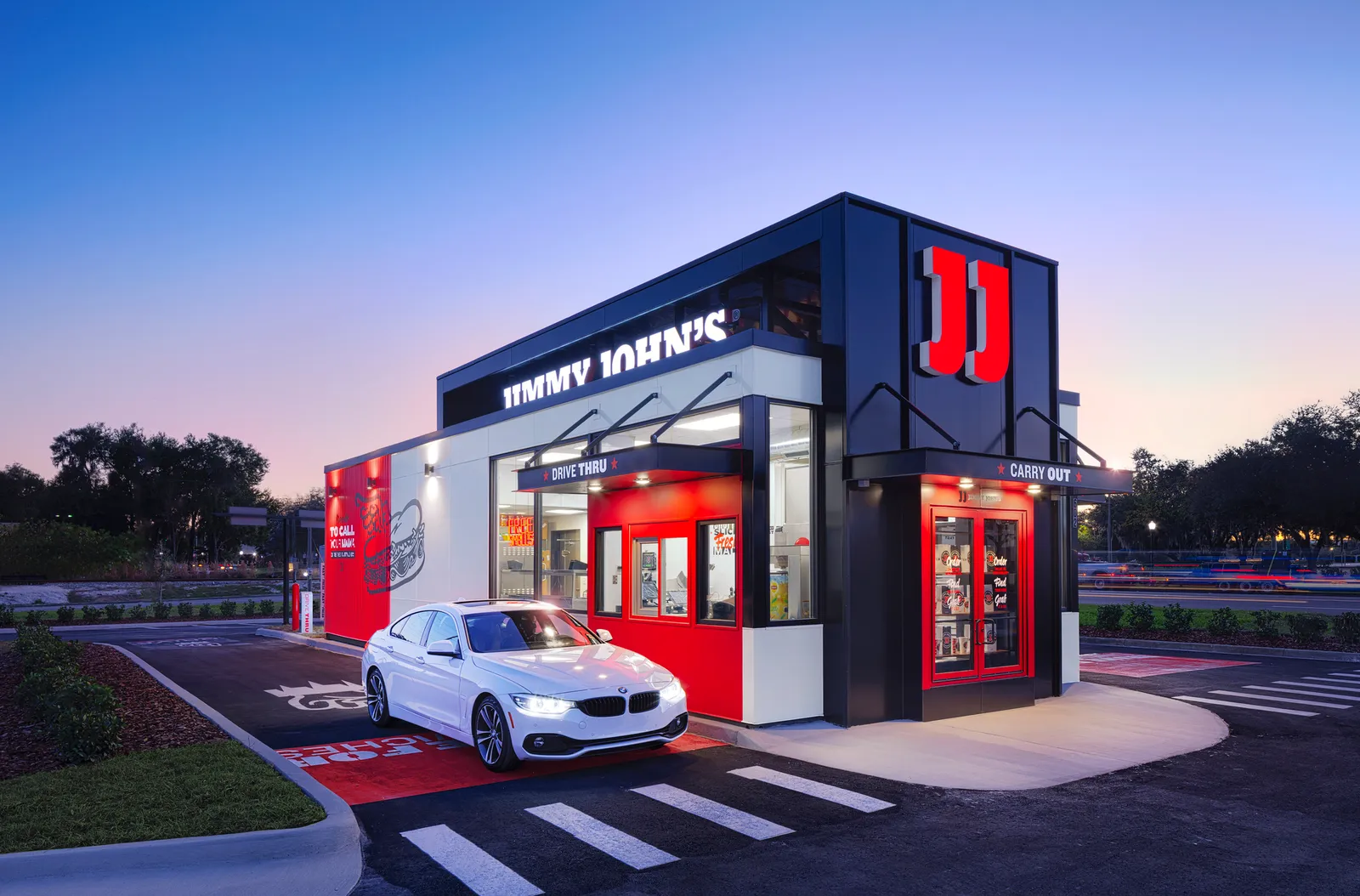
Development will moderate due to capital constraints, high costs
Unit development will slow modestly in 2024 due to high interest rates and construction costs 30% above pre-pandemic levels, Collier said.
According to Restaurant365, 57% of operators said they would grow brick-and-mortar locations in 2024 compared to 60% in the previous year. Of those planning to expand, 25% said they will open one location, 28% will open two to five locations and 4% will open six or more this year.
Demand remains high for franchising, however, and agreements with operators will continue to be signed. But franchisees may try to put off the actual building for a bit, Collier said.
Chains are also decreasing buildout costs for franchisees by offering smaller prototypes. Church’s, which has 100 legacy units of about 1,000 square feet, found that average unit volumes were about the same in 2,000-square-foot stores versus small stores, so there was no drop off in sales at smaller units, Guith said. The company is using real estate analytics to find ideal locations and will deploy a new prototype in 2024 that will have multiple guest queues and drive-thrus.
Some development challenges, especially those derived from the cost of raising capital, might be a reversion to a historical mean, Wasilefsky said.
“The elephant in the room is that 7% or 8% interest rates are historically pretty normal,” Wasilefsky said.
The Federal Funds rate, a key driver of the cost of capital, is the highest it has been since before the 2008 recession, but the consistently low level of the funds rate between 2008 and 2022 looks like an anomaly given that the funds rate remained above 5% between the middle of the Lyndon Johnson administration (1963-1969) and the Dot Com bubble (1999-2001), with some momentary periods of low rates. In January, the Federal Reserve hinted that it was unlikely to cut rates in the immediate future.
Similarly, JP Morgan Chase’s prime rate, a measure of the general cost of borrowing money, was consistently higher than 7% or 8% for much of the last 40 years.
“The industry has set valuations expectations and return parameters, on near zero cost of capital,” Wasilefsky said. “There's an adjustment that needs to be done.”


